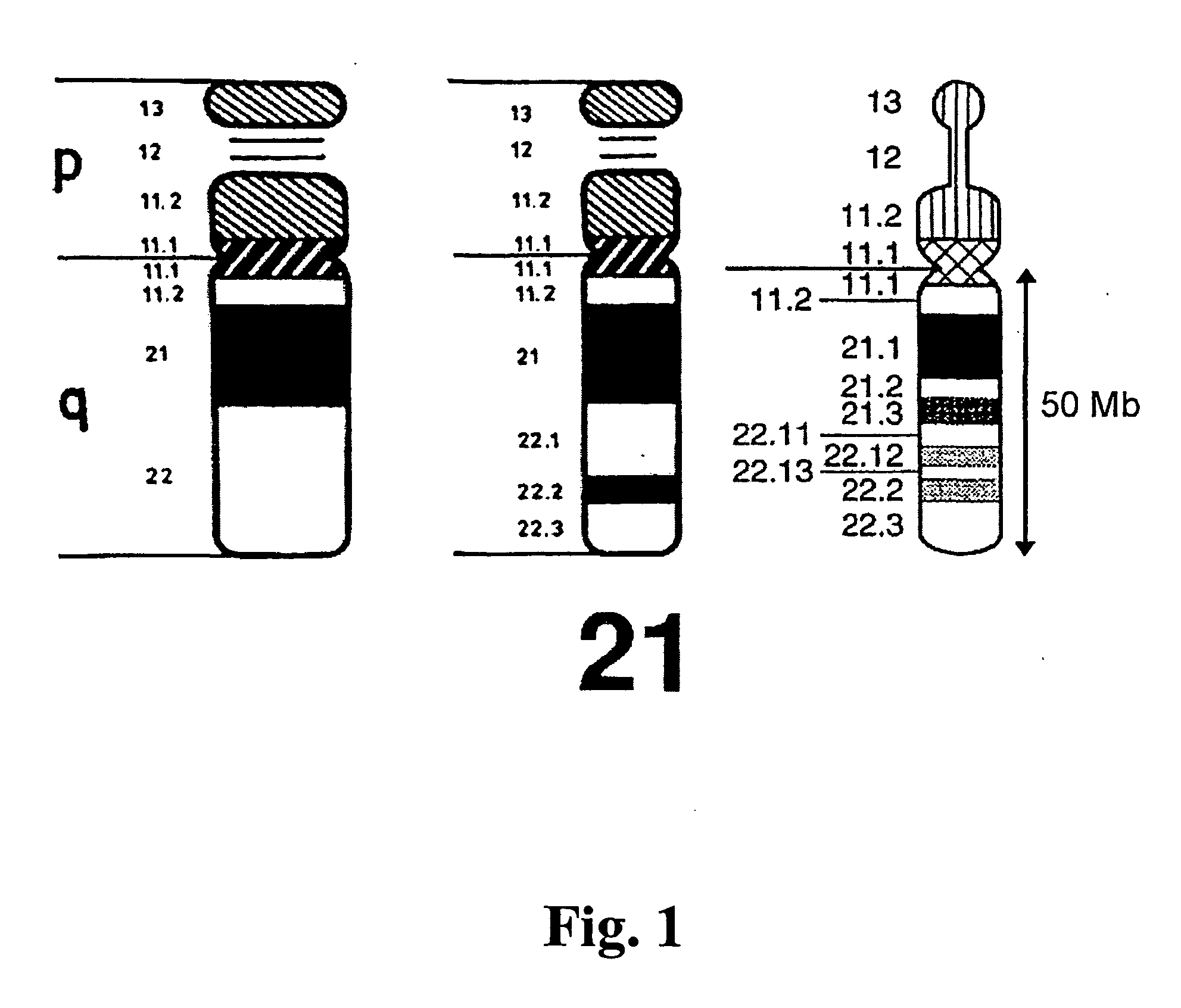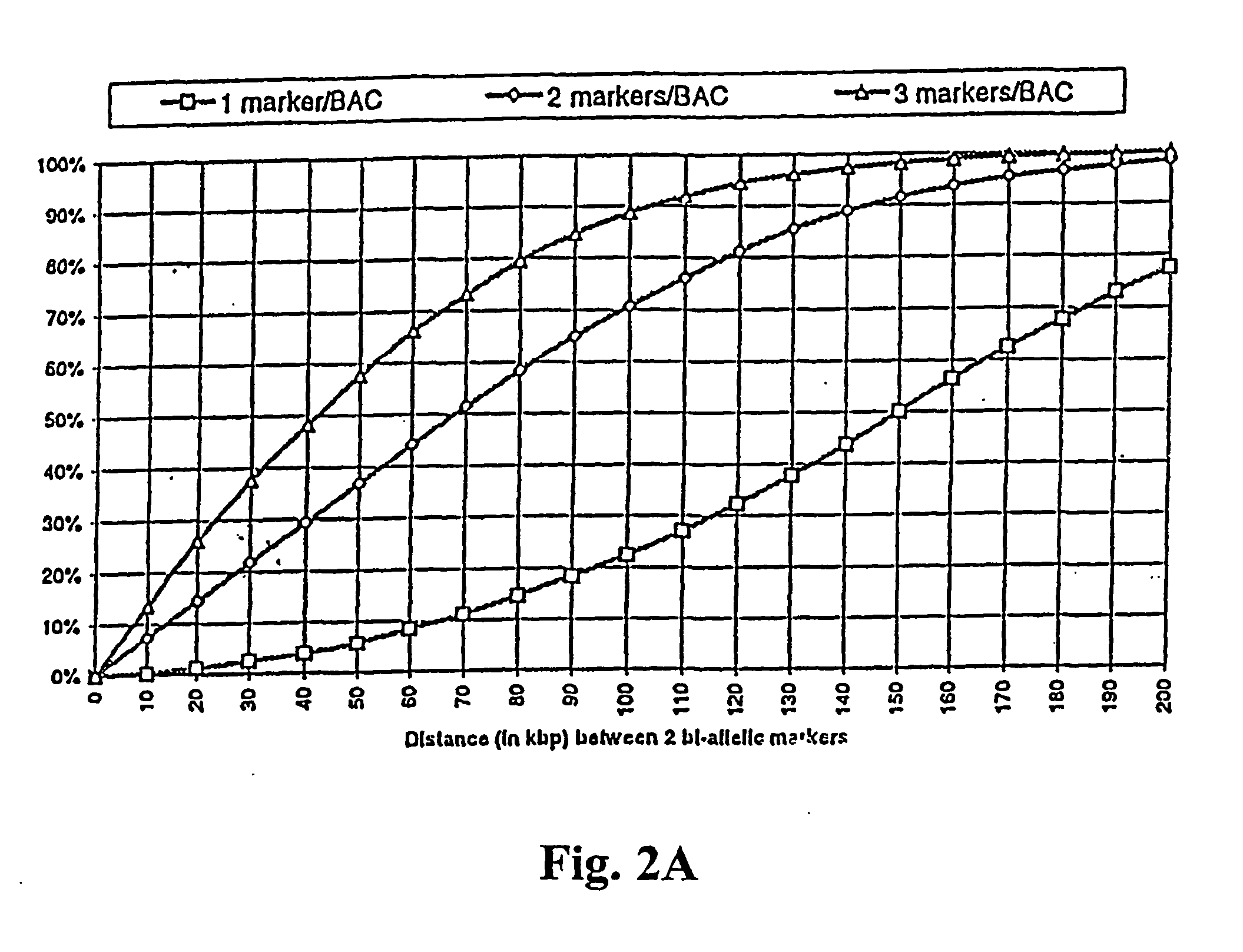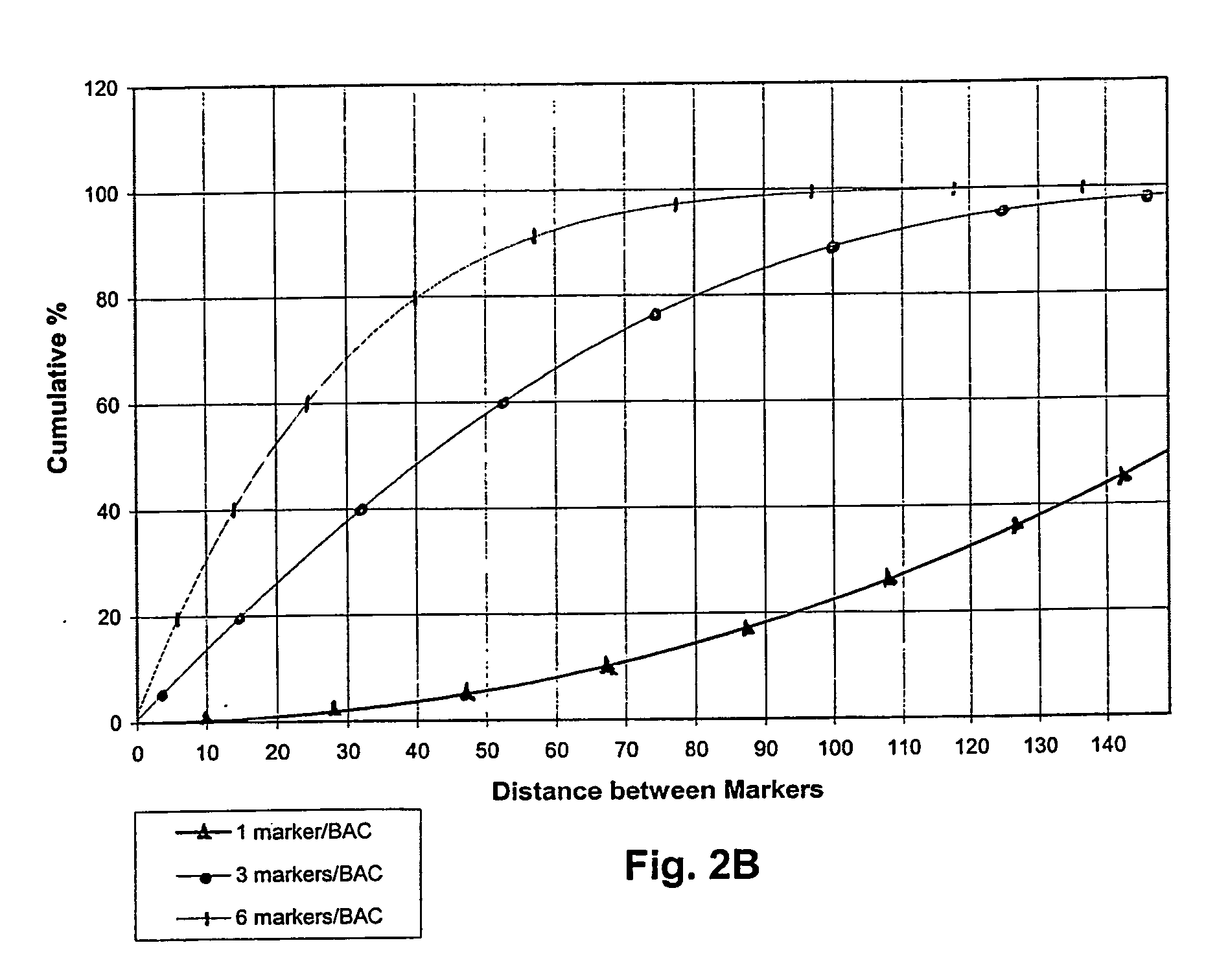Obesity associated biallelic marker maps
a technology of obesity and marker maps, applied in the field of obesity associated biallelic marker maps, can solve the problems of insufficient frequency of evenly distributed rflps in the population to make them useful for tracking genetic polymorphisms, and the number of easily typed informative markers in the map is far too small for the average distance between informative markers
- Summary
- Abstract
- Description
- Claims
- Application Information
AI Technical Summary
Benefits of technology
Problems solved by technology
Method used
Image
Examples
first embodiment
[0145] In a first embodiment, DNA samples from unrelated individuals are pooled together, following which the genomic DNA of interest is amplified and sequenced. The nucleotide sequences thus obtained are then analyzed to identify significant polymorphisms. One of the major advantages of this method resides in the fact that the pooling of the DNA samples substantially reduces the number of DNA amplification reactions and sequencing reactions, which must be carried out. Moreover, this method is sufficiently sensitive so that a biallelic marker obtained thereby usually demonstrates a sufficient frequency of its less common allele to be useful in conducting association studies. Usually, the frequency of the least common allele of a biallelic marker identified by this method is at least 10%.
second embodiment
[0146] In a second embodiment, the DNA samples are not pooled and are therefore amplified and sequenced individually. This method is usually preferred when biallelic markers need to be identified in order to perform association studies within candidate genes. Preferably, highly relevant gene regions such as promoter regions or exon regions may be screened for biallelic markers. A biallelic marker obtained using this method may show a lower degree of informativeness for conducting association studies, e.g. if the frequency of its less frequent allele may be less than about 10%. Such a biallelic marker will however be sufficiently informative to conduct association studies and it will further be appreciated that including less informative biallelic markers in the genetic analysis studies of the present invention, may allow in some cases the direct identification of causal mutations, which may, depending on their penetrance, be rare mutations.
[0147] The following is a description of th...
example 1
Ordering of a BAC Library: Screening Clones with STSs
[0624] The BAC library is screened with a set of PCR-typeable STSs to identify clones containing the STSs. To facilitate PCR screening of several thousand clones, for example 200,000 clones, pools of clones are prepared.
[0625] Three-dimensional pools of the BAC libraries are prepared as described in Chumakov et al. and are screened for the ability to generate an amplification fragment in amplification reactions conducted using primers derived from the ordered STSs. (Chumakov et al. (1995), supra). A BAC library typically contains 200,000 BAC clones. Since the average size of each insert is 100-300 kb, the overall size of such a library is equivalent to the size of at least about 7 human genomes. This library is stored as an array of individual clones in 518 384-well plates. It can be divided into 74 primary pools (7 plates each). Each primary pool can then be divided into 48 subpools prepared by using a three-dimensional pooling s...
PUM
| Property | Measurement | Unit |
|---|---|---|
| Digital information | aaaaa | aaaaa |
| Digital information | aaaaa | aaaaa |
| Digital information | aaaaa | aaaaa |
Abstract
Description
Claims
Application Information
 Login to View More
Login to View More - R&D
- Intellectual Property
- Life Sciences
- Materials
- Tech Scout
- Unparalleled Data Quality
- Higher Quality Content
- 60% Fewer Hallucinations
Browse by: Latest US Patents, China's latest patents, Technical Efficacy Thesaurus, Application Domain, Technology Topic, Popular Technical Reports.
© 2025 PatSnap. All rights reserved.Legal|Privacy policy|Modern Slavery Act Transparency Statement|Sitemap|About US| Contact US: help@patsnap.com



